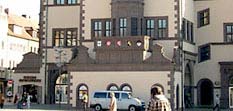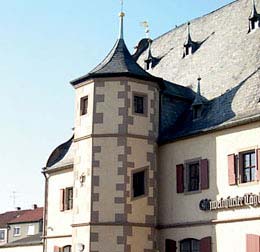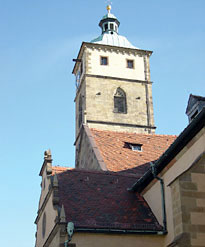|
|
 |
 |
 |
|
 Schweinfurt Schweinfurt
Free City |
|
Only few cities of the Holy Roman Empire were privileged and allowed to call themselves free city. In Franconia these were the cities of Dinkelsbuehl, Rothenburg, Nuernberg, Schweinfurt, Weissenburg and Windsheim. The free cities were directly responsible to the emperor. So the free cities could be considered as the representatives of the emperor in their district.
In the first half of 13th century Schweinfurt was expanded to a real city with city wall, towers and city gates under the influence of the empire. At that time the Nikolaus hospital was founded, a mint was established and construction work at Saint Johannis church began.
|
|
 |
|
|
|
 |
|
| In the 1240’s Schweinfurt was totally destroyed but reconstructed in the following years. A document from 1282 signed by King Rudolf of Habsburg certifies Schweinfurt as a free city finally. Since then the official seal of Schweinfurt proudly bears the imperial eagle. Although Schweinfurt belongs to today’s Free State of Bavaria the imperial eagle of the municipal coat of arms reminds of Schweinfurt’s free city past. |
|
|
|
|
|

|
|
|
|
Local History of Schweinfurt |
|
The city is first proved by documents in the year 791.
In 1234 Schweinfurt is first mentioned as free city.
1240/50: First destruction of the city.
1437: Bargain of the so-called "Peterstirn”.
1554: Second destruction of the city.
In 1802 Schweinfurt get lost of its free city status. |
|
|
|
 |
|








